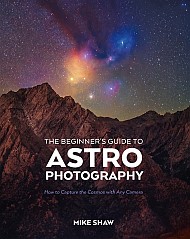Astronomy
Hunting for Pairs of Monster Black Holes
When two galaxies merge, the supermassive black holes at their centres should eventually find each other and begin a gravitational dance that lasts millions of years. Despite decades of predictions, astronomers are still hunting for definitive proof these binary systems exist. A new review examines the clues scattered across the universe, from wobbling jets spanning hundreds of thousands of light years to specific spectral signatures, and explores why finding these black hole pairs matters for understanding both the past and future of our own Galaxy.
Coral reefs are at a tipping point after surging global temperatures
Coral reefs are at a tipping point after surging global temperatures
What has Webb Taught Us About Rocky Exoplanets So Far?
The JWST has pushed the boundaries of exoplanet characterization. But one thing it hasn't done yet is to determine if rocky exoplanets close to our Solar System can retain their atmospheres. The authors of a new study propose a new "five-scale height challenge" that will help astronomers obtain more precise atmospheric information on rocky exoplanets using Webb.
Betelgeuse's Secret Companion Finally Revealed
Betelgeuse, the stunning red star in Orion's shoulder, has been hiding a secret companion for years but proving it has been somewhat challenging. When the elusive "Betelbuddy" (I love that name) reached its maximum separation from the supergiant star last December, astronomers had just one chance before it disappeared behind Betelgeuse for another two years. Using NASA's most powerful space telescopes, researchers finally captured the tiny companion lurking in the overwhelming glare of a star 700 times larger than our Sun. But the real surprise wasn't just finding it, it was discovering what type of object it actually is, and what that reveals about one of the night sky's most famous stars and its puzzling six year brightening cycle.
The ESA's Mars Express and ExoMars Orbiters Catch a Glimpse of 3I/ATLAS
Between 1 and 7 October, ESA’s ExoMars Trace Gas Orbiter (TGO) and Mars Express spacecraft turned their eyes towards interstellar comet 3I/ATLAS, as it passed close to Mars.
Could We Really Turn Mars Green?
Science fiction is edging closer to reality. A team of scientists has created a detailed roadmap for transforming Mars from a frozen, lifeless desert into a world where plants could grow and humans might one day breathe without spacesuits. The plan isn't about launching missions tomorrow, it’s about whether we should even try, and what recent breakthroughs in biology, climate engineering, and space launch technology tell us about what's now possible. But there's a catch, terraforming a planet like Mars might erase its geological history forever, destroying any traces of ancient Martian life and eliminating our chance to understand how worlds evolve. The question has shifted from "could we turn Mars green?" to something far more profound "should we?”
Imaging Dark Matter One Clump at a Time
What if you could photograph something completely invisible? To our rather limited eyes that’s what astronomers seem to do all the time with infra red and radio astronomy to name a few. But, astronomers can do this in a rather intriguing way with something that does seem to be truly invisible! A team of astronomers have captured the latest "image" of a dark matter object a million times more massive than our Sun, not by seeing it, but by watching how it warps the light from galaxies billions of light years beyond it. Using an Earth sized telescope network they have revealed one of the smallest dark matter clumps ever found, offering a glimpse into the hidden structure of our universe.
LIVE Video from the International Space Station (Seen From The NASA ISS Live Stream)
How the Math That Powers Google Foresaw the New Pope
A decades-old technique from network science saw something in the papal conclave that AI missed
OpenAI’s New Sora App Lets Users Generate AI Videos—And Star in Them
Despite early, and familiar, copyright growing pains, Sora may be the prelude to AI-generated on-demand TV and movies
Part of a Pig Liver was Transplanted into a Human
Surgeons in China transplanted part of pig liver into a patient with an incurable cancerous tumor, and it functioned for more than a month
Physicists are uncovering when nature’s strongest force falters
Physicists are uncovering when nature’s strongest force falters
The Science Behind Peak Fall Colors: What to Expect in 2025
If you want to know where the best leaf peeping will be this year, climate science and weather can provide the answer
Phosphine Discovered In A Brown Dwarf's Atmosphere For The First Time
Phosphine has caused quite a stir in the astronomical world lately. That was largely due to its (still hotly debated) detection in the atmosphere of Venus. While the only known way for phosphine to be created on terrestrial worlds, like Venus, is through some sort of biological origin, it is relatively common among larger gas giants and even “brown dwarfs” - failed stars larger than Jupiter but not quite large enough to start their own hydrogen fusion process. Previously, we hadn’t yet seen phosphine in the atmosphere of brown dwarf in other solar systems, but a new paper from a diverse group of researchers, available in pre-print form on arXiv, used data collected by the James Webb Space Telescope (JWST) to find it for the first time. They also realized the mechanism that made it so hard to spot in the first place - the object’s metallicity.
Serum based on plant extracts boosts hair growth in weeks
Serum based on plant extracts boosts hair growth in weeks
Week in images: 06-10 October 2025
Week in images: 06-10 October 2025
Discover our week through the lens


